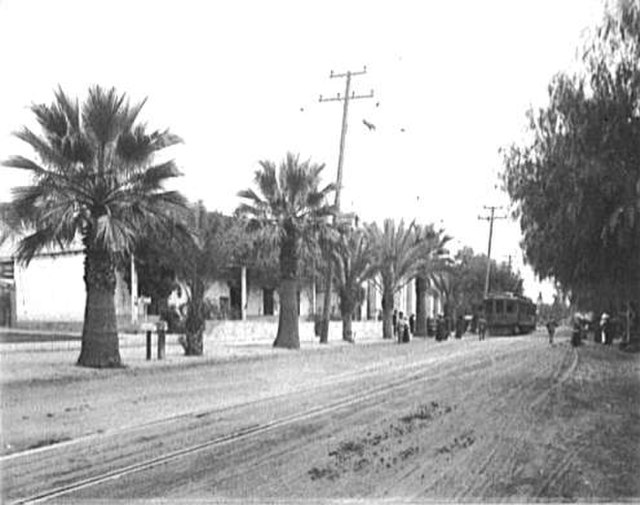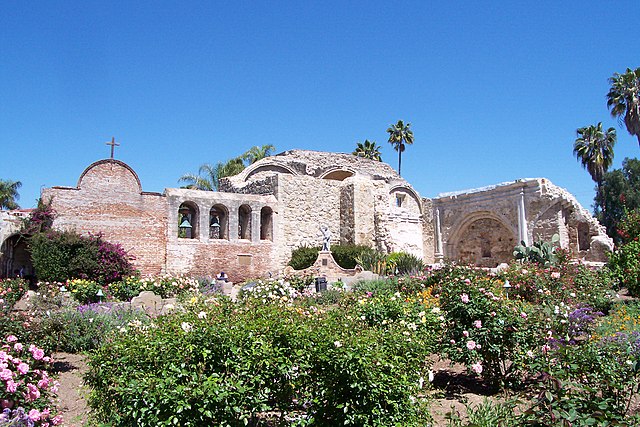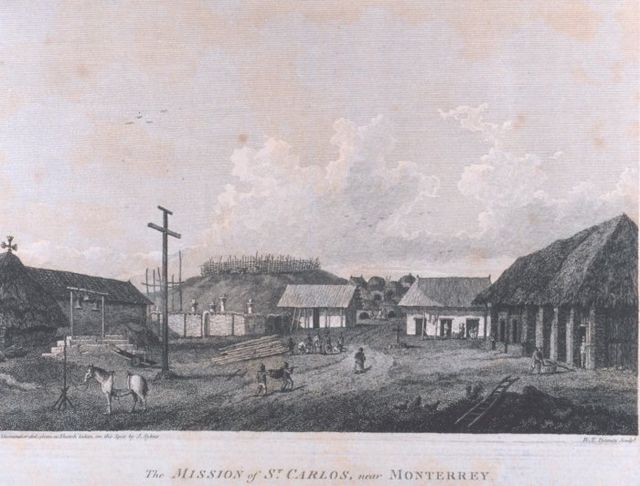Mission San Gabriel Arcángel
Mission San Gabriel Arcángel is a Californian mission and historic landmark in San Gabriel, California. It was founded by the Spanish Empire on "The Feast of the Birth of Mary," September 8, 1771, as the fourth of what would become twenty-one Spanish missions in California. San Gabriel Arcángel was named after the Archangel Gabriel and often referred to as the "Godmother of the Pueblo of Los Angeles."
A view of Mission San Gabriel Arcángel in April 2005. The open stairway at the far right leads to the choir loft, and to the left is the six-bell campanario ("bell wall") that was built after the original bell structure, located at the far end of the church, toppled during the 1812 San Juan Capistrano earthquake.
The belfry of Mission San Gabriel, 1905
A streetcar of the Pacific Electric Railway makes a stop at Mission San Gabriel Arcángel c. 1905.
Spanish missions in California
The Spanish missions in California formed a series of 21 religious outposts or missions established between 1769 and 1833 in what is now the U.S. state of California. The missions were established by Catholic priests of the Franciscan order to evangelize indigenous peoples backed by the military force of the Spanish Empire. The missions were part of the expansion and settlement of New Spain through the formation of Alta California, expanding the empire into the most northern and western parts of Spanish North America. Civilian settlers and soldiers accompanied missionaries and formed settlements like the Pueblo de Los Ángeles.
A view of Mission San Juan Capistrano. At left is the façade of the first adobe church with its added espadaña; behind the campanario, or "bell wall" is the "Sacred Garden." The Mission has earned a reputation as the "Loveliest of the Franciscan Ruins."
Mission San Luis Rey de Francia, circa 1910. This mission is architecturally distinctive because of the strong Moorish lines exhibited.
The Missionaries as They Came and Went. Franciscans of the California missions donned gray habits, in contrast to the brown that is typically worn today.
A drawing of Mission San Carlos Borromeo de Carmelo prepared by Captain George Vancouver depicts the grounds as they appeared in November 1792. From A Voyage of Discovery to the North Pacific Ocean and Round the World.







